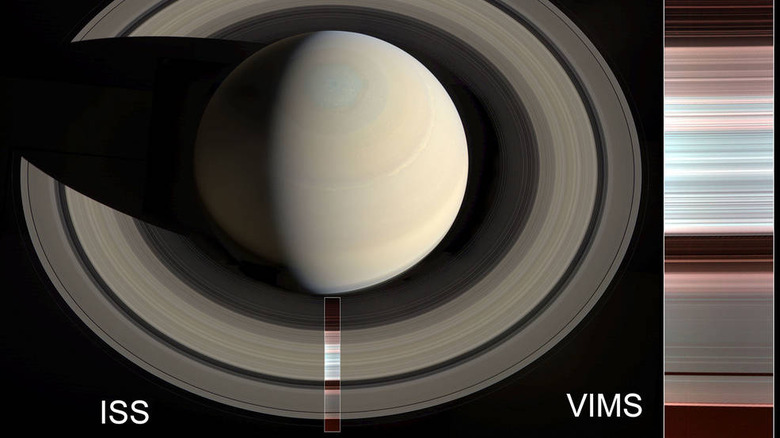NASA Says Saturn's Rings Are Far More Complex Than We Thought
NASA's Cassini spacecraft arrived at Saturn back in 2004 to help researchers better understand the planet and its rings. The mission ended in 2017, but the data remains and scientists are still publishing new studies on it. The latest among those studies reveals a little more about Saturn's rings, in this case its strange and unique features.
According to a study published on June 13, four instruments on the Cassini spacecraft took the closest ever observations of Saturn's main rings. The results from a study of those observations are detailed in the newly published paper, according to NASA, including findings related to 'sculpted' features in the rings resulting from embedded masses.

NASA refers to the sculpting as 'fine details,' one featuring different textures and patterns ranging from 'strawlike' to 'clumpy.' These structures became more apparent the closer Cassini got to the rings, ultimately revealing that what appears to be flat sheets from a distance are actually ridged and filled with gaps and other interesting features.
In certain cases, the changes were caused by Saturn's moons as they interact with the rings, including the mooon Daphnis. Cassini scientist Matt Tiscareno said via NASA, 'These new details of how the moons are sculpting the rings in various ways provide a window into the solar system formation, where you also have disks evolving under the influence of masses embedded within them.'
The researchers note three different distinct textures revealed by the closest images: smooth, streaky, and clumpy. The puzzle becomes more interesting the closer humanity gets to the rings, according to NASA's Jeff Cuzzi, who has studied Saturn's rings for decades. 'We are just settling into the next phase, which is building new, detailed models of ring evolution — including the new revelation from Cassini data that the rings are much younger than Saturn.'
